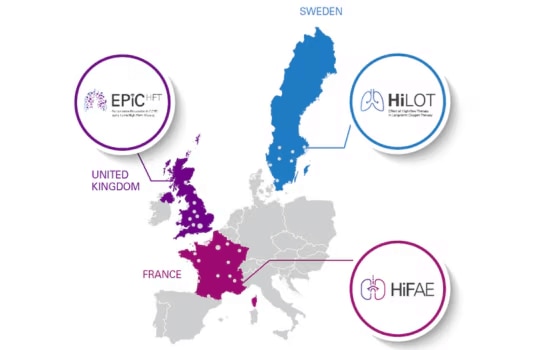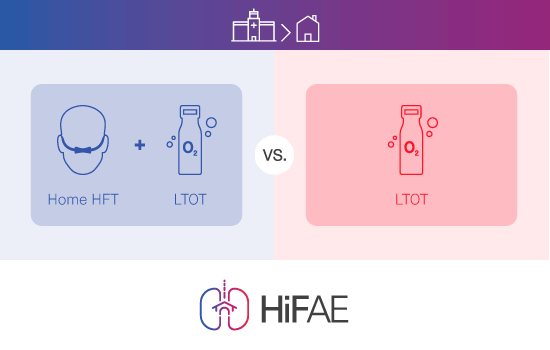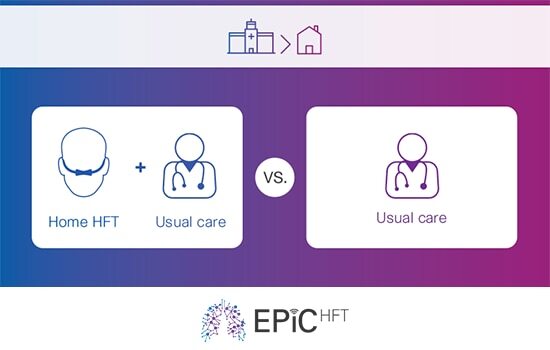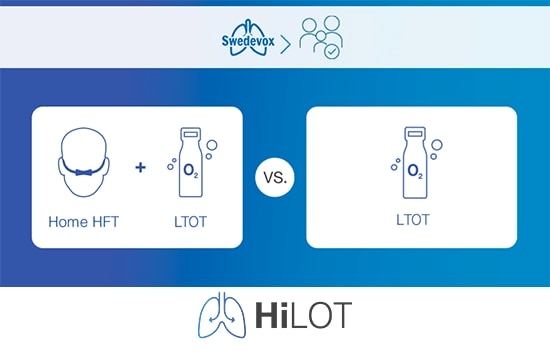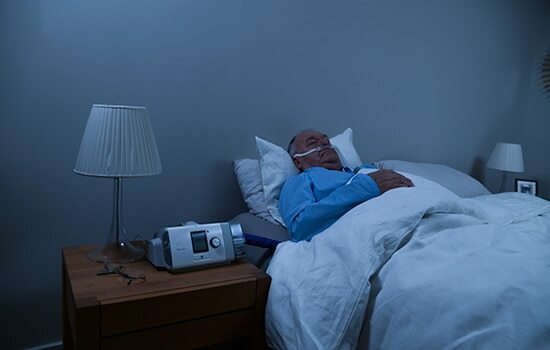Forskning i high-flow hjemmebehandling til KOL
Se nøgleresultater fra nyere klinisk forskning om virkningsmekanismerne for high-flow-behandling i hjemmet (HFT) og de kliniske resultater hos patienter med KOL.
Hjemme HFT-studier har fremgang i Europa
Der er i øjeblikket tre nøglestudier, der finder sted i centre i Frankrig, Sverige og Storbritannien – vores infografik giver et hurtigt overblik, med flere detaljer om hver studie tilgængelig nedenfor.
HiFAE-studiet
HiFAE (high-flow-hjemmebehandling med ilt for at reducere akutte eksacerbationer af KOL) er et randomiseret, kontrolleret studie designet til at evaluere effektiviteten af high-flow-hjemmebehandling med ilt versus standard langsigtet iltbehandling (LTOT) hos patienter med KOL. Dette igangværende studie udføres på 18 centre i Frankrig (N=406). Det primære endepunkt er tiden til første hospitalsindlæggelse for akut eksacerbation af KOL (AECOPD) eller død.
EPIC-HFT-studiet
EPiC-HFT (exacerbation prevention in COPD using home high-flow therapy) er et randomiseret, kontrolleret studie, der undersøger effekten af high-flow-hjemmebehandling (HFT) som supplement til sædvanlig medicinsk behandling på indlæggelsesfri overlevelse efter en alvorlig forværring af KOL. Denne igangværende undersøgelse udføres på 14 centre i Storbritannien (N=502), og det primære endepunkt er 12 måneders indlæggelsesfri overlevelse uden alle årsager.
HiLOT-studiet
HiLOT (Effect of High-flow therapy in Long-term Oxygen Therapy) er et registerbaseret, randomiseret kontrolleret studie af effekten af at bruge high-flow-behandling i hjemmet (HFT) med langvarig iltbehandling (LTOT) i løbet af et år i personer med KOL eller ILD, i forhold til at bruge LTOT alene. Dette igangværende studie udføres på 10 centre i Sverige (N=310 (270 KOL-patienter og 40 ILD-patienter)). Det primære endepunkt er tid til første hospitalsindlæggelse eller dødsfald af alle årsager i året efter randomisering hos KOL-patienter.
HFT er enkel og nem at betjene og giver både kliniske og patientmæssige fordele af denne behandlingsform til hjemmebrug hos KOL-patienter. High flow-behandling anvendes på nuværende tidspunkt på hospitalernes akutafdelinger og er ved at vinde indpas som langvarig behandlingsløsning i hjemme til KOL-patienter. 6,7
Virkemåde og kliniske fordele
High-flow-behandlingen har flere forskellige vigtige funktioner, herunder sekretfjernelse- og håndtering samt forbedrede respiratoriske mekanismer, der letter respirationsarbejdet og øger patientkomforten.1,5,11,12,13
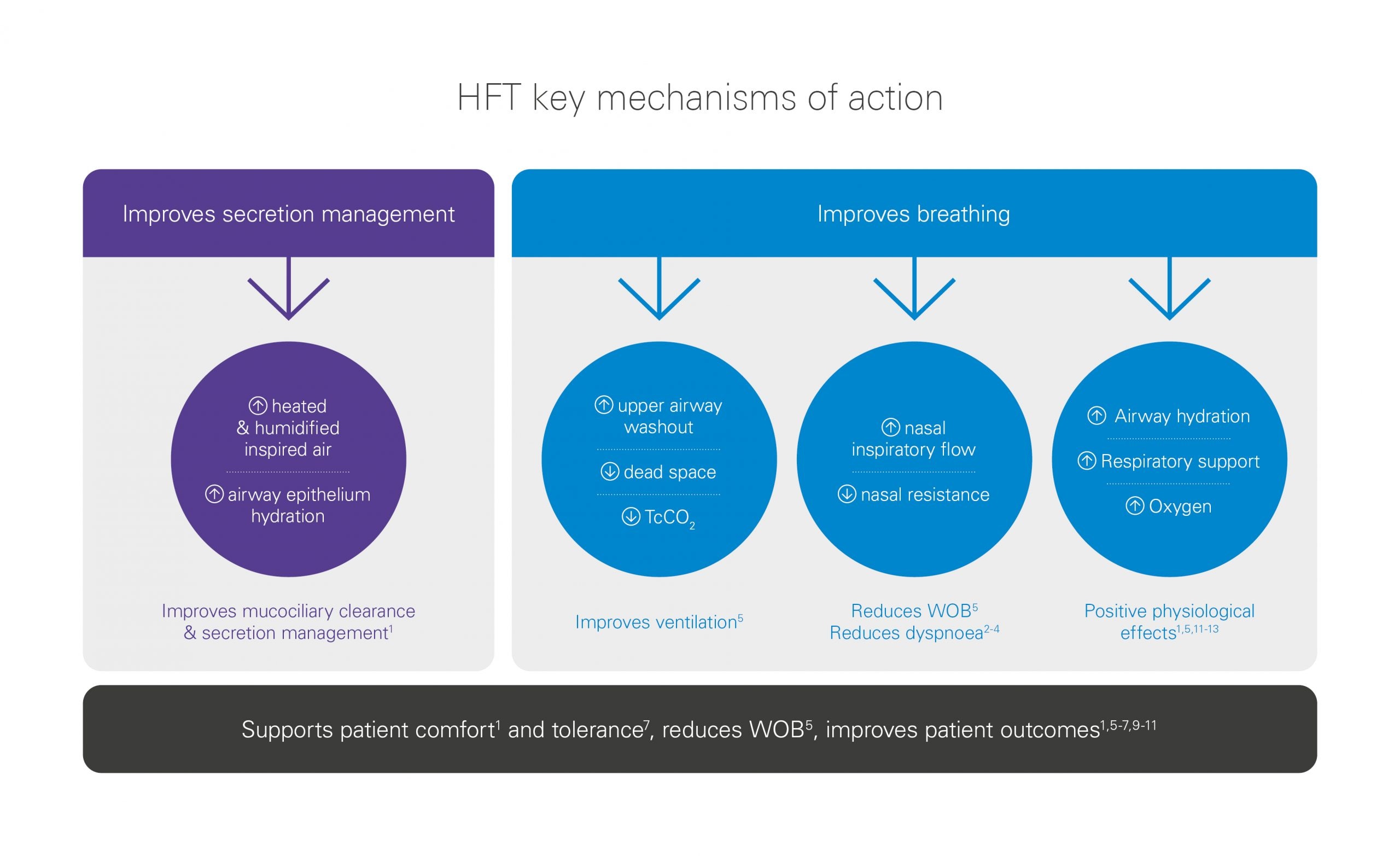
Behandlingsresultater og patientfordele
High-flow-behandling i hjemmet kan nedsætte forekomsten af akutte eksacerbationer og indlæggelser hos KOL-patienter,6,7 og forbedre symptomer såsom sekretophobning1, hoste1 og dyspnø under fysisk anstrengelse, 2-4 mens patienten samtidig opnår en højere livskvalitet i forhold til standardbehandlingen. 6,7
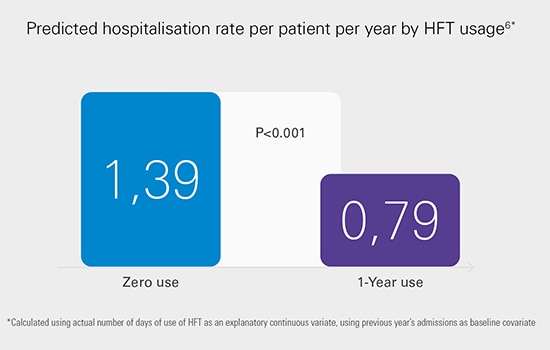
Patientkomfort og livskvalitet
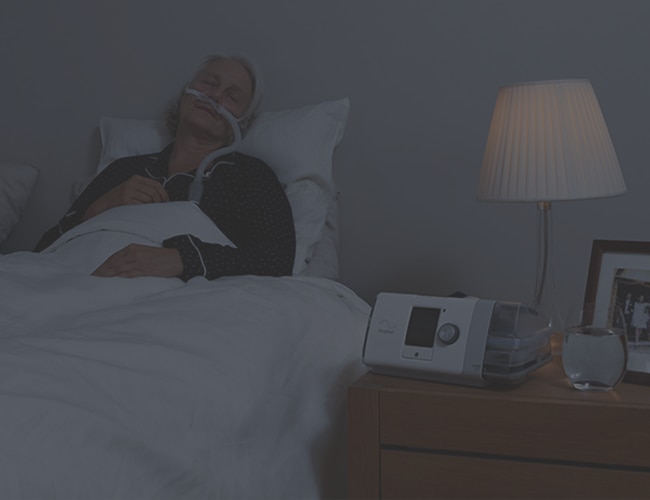
KOL-patienter som modtager high-flow-behandling i hjemmet opnår en konstant eller forbedret livskvalitet set i forhold til patienter som modtager traditionel KOL-behandling, herunder langvarig iltbehandling alene.6,7 Patienterne lader desuden til at tåle high flow-behandlingen godt7, ligesom behandlingen giver øget patientkomfort ved at lette sekretudskillelsen1 og nedbringe forekomsten af dyspnø under fysisk anstrengelse.2-4
High-flow-behandling i hjemmet: en patient case study
Hvilken effekt havde hjemme-HFT på en 64-årig eks-ryger med KOL GULD 3D? Respirationsspecialist Dr. Díaz Lobato præsenterer en detaljeret case study sammen med beviser fra nyere forskning.
Bliv en del af ResMed-fællesskabet
Hold dig opdateret, og du vil være blandt de første til at høre alle de seneste nyheder og seneste udvikling.
Ikke-kontraktuelt billede af nasalcannula – Brug kun nasalcannula anbefalet af ResMed
Referencer:
- Hasani A, et al. Domiciliary humidification improves lung mucociliary clearance in patients with bronchiectasis. Chron Respir Dis 2008;5:81-86.
- Cirio S, Piran M, Vitacca M, Piaggi G, Ceriana P, Prazzoli M, et al. Effects of heated and humidified high flow gases during high-intensity constant-load exercise on severe COPD patients with ventilatory limitation. Respiratory Medicine 2016;118:128–32.
- Neunhäuserer D, Steidle-Kloc E, Weiss G, Kaiser B, Niederseer D, Hartl S, et al. Supplemental Oxygen During High-Intensity Exercise Training in Nonhypoxemic Chronic Obstructive Pulmonary Disease. The American Journal of Medicine 2016;129(11):1185–93.
- Chatila W, Nugent T, Vance G, Gaughan J, Criner GJ. The Effects of High-Flow vs Low-Flow Oxygen on Exercise in Advanced Obstructive Airways Disease. Chest 2004;126(4):1108–15.
- Fraser JF, et al. Nasal high flow oxygen therapy in patients with COPD reduces respiratory rate and tissue carbon dioxide while increasing tidal and end-expiratory lung volumes: a randomised crossover trial. Thorax 2016;71:759-761.
- Storgaard LH, et al. Long-term effects of oxygen-enriched high-flow nasal cannula treatment in COPD patients with chronic hypoxemic respiratory failure. Int J Chron Obstruct Pulmon Dis 2018;13:1195-1205.
- Rea H, et al. The clinical utility of long-term humidification therapy in chronic airway disease. Respir Med 2010;104:525-533.
- Nagata K, Kikuchi T, Horie T, Shiraki A, Kitajima T, Kadowaki T, et al. Domiciliary High-Flow Nasal Cannula Oxygen Therapy for Stable Hypercapnic COPD Patients: A Multicenter, Randomized Crossover Trial. Annals of the American Thoracic Society. 2017.
- Elshof J, Duiverman ML. Clinical Evidence of Nasal High-Flow Therapy in Chronic Obstructive Pulmonary Disease Patients. Respiration 2020;99:140-153.
- Nishimura M. High-Flow Nasal Cannula Oxygen Therapy in Adults: Physiological Benefits, Indication, Clinical Benefits, and Adverse Effects. Respir Care 2016;61:529-541.
- Vogelsinger H, et al. Efficacy and safety of nasal high-flow oxygen in COPD patients. BMC Pulm Med 2017;17:143.
- Biselli P, Fricke K, Grote L, Braun AT, Kirkness J, Smith P, et al. Reductions in dead space ventilation with Nasal High Flow depend on physiologic dead space volume – Metabolic hood measurements during sleep in patients with COPD and controls. European Respiratory Journal. 2018.
- McKinstry S, Pilcher J, Bardsley G, Berry J, Van de Hei S, Braithwaite I, et al. Nasal high flow therapy and PtCO2 in stable COPD: A randomized controlled cross-over trial. Respirology. 2017.
Content last updated: 06/2024
